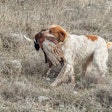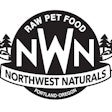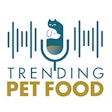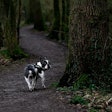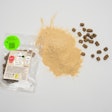Food poisoning isn’t only a human problem, according to the US Food and Drug Administration, which says that pets are also at risk if they eat foods that are contaminated with disease-causing bacteria. Two of these bacteria—Salmonella and Listeria monocytogenes—are particularly dangerous to both pets and humans, says the FDA.
Raw petfood consists primarily of meat, bones and organs that haven’t been cooked, and therefore are more likely than cooked food to contain organisms that can make a dog or cat sick, says William J. Burkholder, DVM, PhD, veterinary medical officer in the FDA’s Division of Animal Feeds. Moreover, raw food can make humans sick as well if it isn't handled properly. The FDA says it does not believe feeding raw petfoods to animals is consistent with the goal of protecting the public from significant health risks.
The agency recommends cooking raw meat and poultry to kill harmful bacteria like Salmonella and Listeria monocytogenes before the food is given to pets. Burkholder says people who choose a raw diet for their pets often point out that feral dogs and cats catch prey and eat it raw. “That’s true,” he says, “but we don’t know how many of these animals get sick or die as a result of doing that. Since sick feral animals are rarely taken to a veterinarian when they’re ill, there’s no way to collect that information.”
Consumers also run the risk of getting sick if they handle contaminated petfoods and accidentally transfer the bacteria to their mouths. “If you’re going to handle raw foods, you need to pay particular attention to good hygienic practices,” says Burkholder. “Wash your hands and anything else that comes into contact with the product with hot, soapy water for at least 20 seconds.”
Feeding raw food to a pet also increases the risk of contaminating food contact surfaces and other places. “Even if the dog or cat doesn’t get sick, they can become carriers of Salmonella and transfer the bacteria to their surroundings, and then people can get the disease from contact with the infected environment,” says Burkholder. Once Salmonella gets established in the pet’s gastrointestinal tract, the animal can shed the bacteria when it has a bowel movement, and the contamination will continue to spread.
“Feeding raw foods to pets increases the risk that both the pet and the people around the pet will encounter bacteria that cause foodborne illness, particularly if the products are not carefully handled and fed,” says Burkholder. “This is certainly one factor that should be considered when selecting diets for your pet.”









